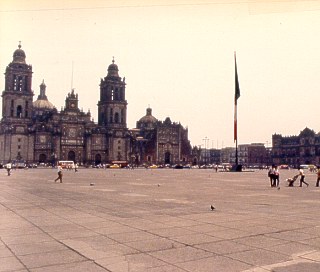 |
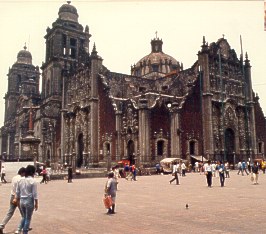 |
| Mexico City Zocolo or city square. Mexico
city at first was built on an island surrounded
by a lake and connected by causeways. Long
ago the lake was drained and now there are
buildings where the lake was and beyond. |
Main Cathedral of Mexico city. This square
and buildings were built on top of and using
the same stones as the main buildings of the
Aztec capital. Some of these big old buildings
are sinking in the areas soft dirt. |

These old Spanish colonial churches are found
all over Mexico. They have one or two bell
towers and very ornate fronts. They are made
out of stone. |
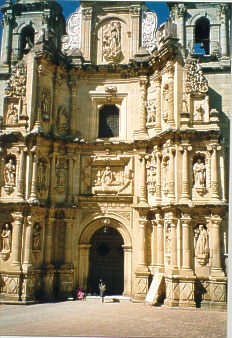 |
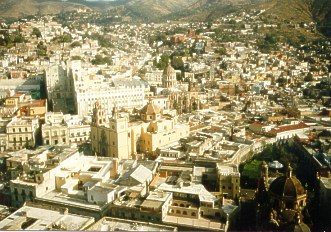 |
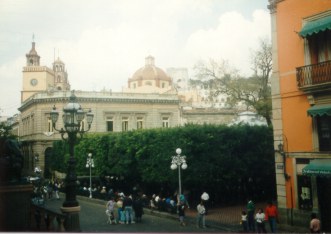 |
| Guanajuato is a smaller town that is located
between hills. It is rich in Mexican history and
a good place to visit. Its streets are very
narrow in places. There are only foot paths
when the area gets steep as they wind up the
hills. |
Town square in Guanajuato. These trees in
the square trimmed perfectly into a nice
square is very typical of many towns. In the
middle a bandstand where performances are
held is also typical. This is the place to meet
people. |
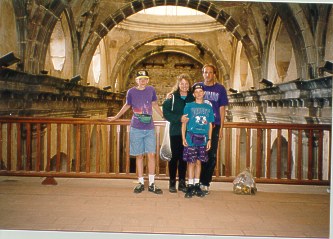 |
 |
| Us in one of the churches. Note the stone
archways. |
Guanajuato is also known for its mummies.
They weren't designed to be mummies, but
buried in the dry salty soil resulted in
mummies. |
 |
 |
| Teotitlan are ruins just outside Mexico city.
These ruins are much older than the Aztec
period. They are massive but plain. |
Here we are in Oaxaca, a town in the southern
part of Mexico. This town has more
indigenous influence and much artwork
including the brightly painted wood animal
figures, wool rugs and knives. |
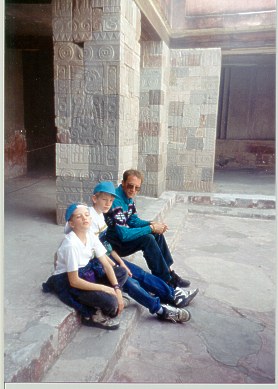 |
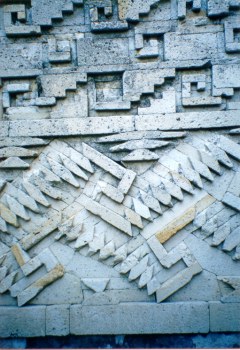 |
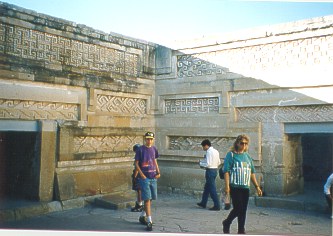 |
At the Mixteca ruins outside Oaxaca. The
Mixteca architecture is marked by geometric
patterns made out of the or carved into the
stones. There were many cultural nations in
the history of Mexico including the Olmec,
Mixteca, Aztec, Mayans and Toltecs. They all
had there times and places. When the Spanish
came to Mexico the Aztecs were the dominate
group at that time. |
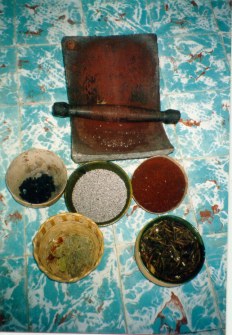 |
 |
| Oaxaca is known for its woven wool rugs.
They are often dyed with natural dyes. The
most famous in the area is cochineal a red dye
made from an insect found on cactus plants.
The rugs are then made on loams in family
operations or small cooperatives. The designs
are full of colors and vary from animal figures
to geometric designs. Wes and Kyler are in
front of one to the right. |
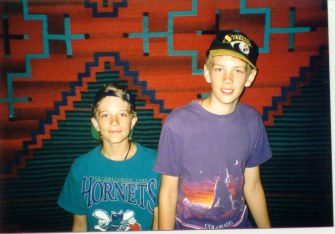 |
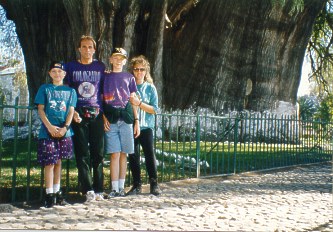 |
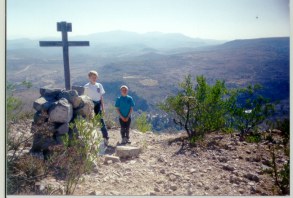 |
| In a town near Oaxaca there are these massive
old trees. This one is said to be the widest
tree in the world. |
Wes and Kyler in the hills of Queretaro. This
is a dry mountainous area north of Mexico
city. |
 |
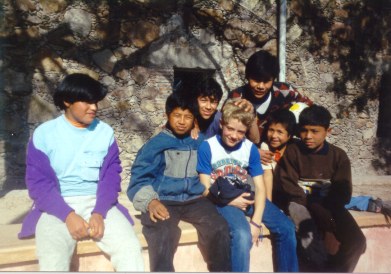 |
| In Colon, Queretaro there is an orphanage run
by and American priest named Santa Maria
Mexicano. Its in an old monastery and cares
for over 300 kids. I've gone many times there
to help out with projects. more information
on this organization see its website at:
www.mvproduce.com/SantaMaria
Above Kyler with some of the kids. We were
married at santa Maria on new years day by
Father Norman with 300 kids as guests. |
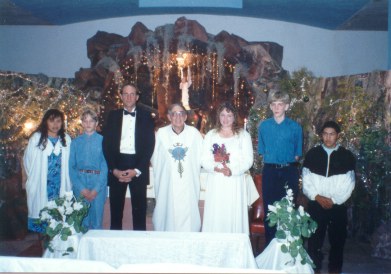 |
 |
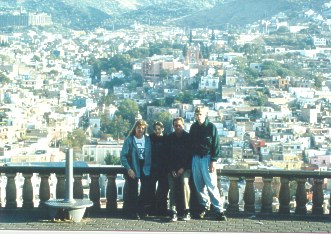
San Cristóbal Las Casas is a beautiful city in
Chiapas Mexico. Its in the far south of
Mexico and borders Guatemala. Most of the
people there share history with the indigenous
populations of Guatemala and several
indigenous languages are spoken by various
towns. To the left is a religious dance. When
we were they the area was troubled by the
Zapatista uprising. |
 |
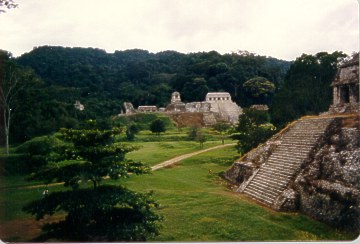 |
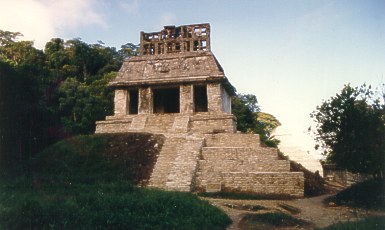 |
Palenque is an old Mayan ruins in the southern
state of Yucatan. The Yucatan is a mainly
flat, tropical, sparsely populated area with
highly spiced food. These ruins are well
preserved with temples still maintaining there
roof combs and some of the original paint that
covered them. There are also in the area these
underground lakes/water holes with small
openings to the light that are just beautiful. |
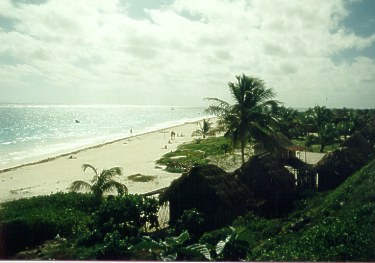 |
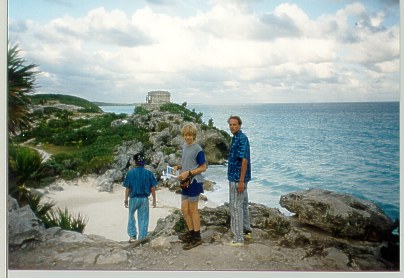 |
| Tulum is a small town on the Yucatan coast
just south of Cancun, Mexico. It has just the
same beaches without the crowds and
expense. |
There are small Mayan ruins in Tulum right on
the Ocean. |
 |
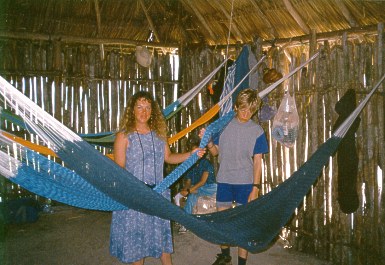 |
| We stayed at a small bungalow in Tulum and |
slept on the locally made hammocks. |





























